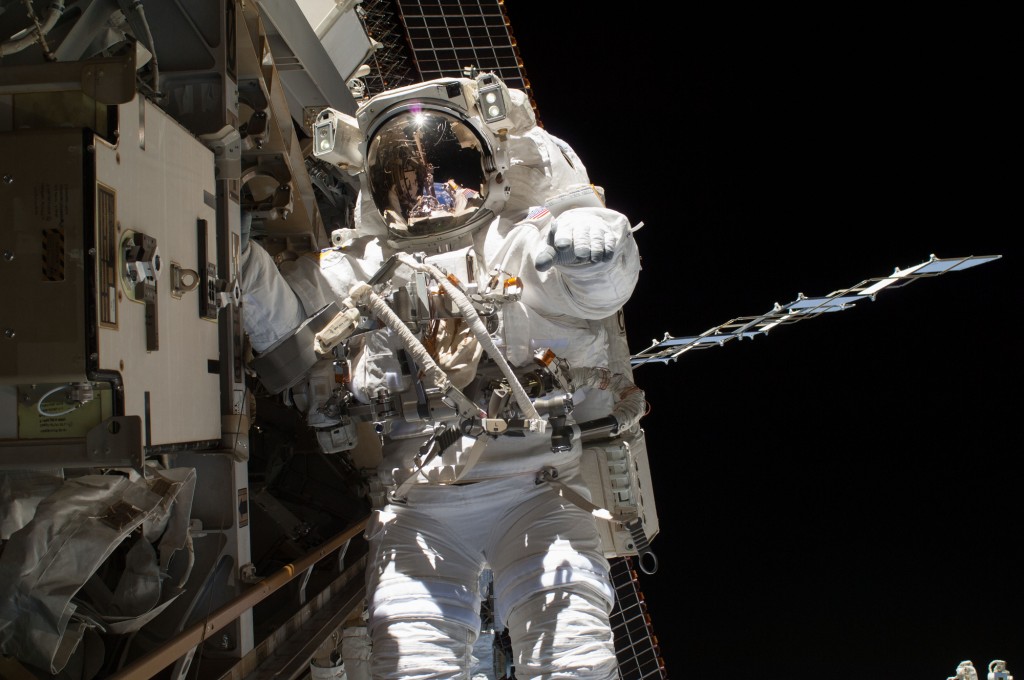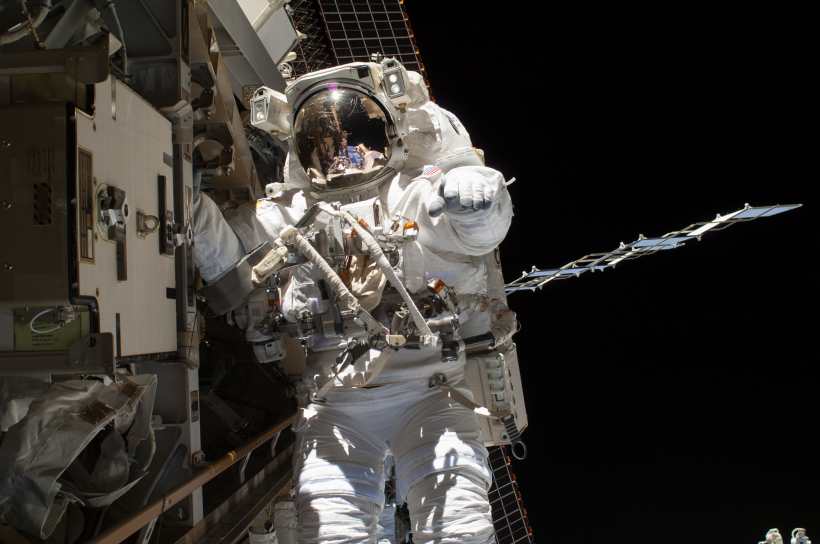
Besides making the awesome men and women who serve as astronauts look ridiculously cool, space suits have a long list of things that they do to help out the people wearing them. Space suits are excellent examples of how engineers must work to tackle the formidable challenges posed in the design of equipment that will be used in vastly unknown environments. Depending on who you ask, these suits could be a design engineer’s worst nightmare or the project of a lifetime. Despite the rather bland look of the suit itself (temporarily ignoring all of the equipment attached to it), the suit is actually a highly complex product, strongly influenced by scientific principles from many diverse subjects in engineering…perhaps most notably: materials science/engineering and heat transfer. As many of you may be aware, outer space is basically a vacuum, meaning it has a very low pressure associated with it, relative to atmospheric pressure. Astronauts, however, require an environment far closer to atmospheric pressure, or else the pressure differential (difference) between the environment and their internal pressure could literally cause their bodily fluids to boil, followed by tissue expansion, followed by organ…well, let’s just say it would not be very pretty. Anyways, the point being that these suits need to be pressurized, which translates to their needing very special materials that can withstand these pressure differences while still performing a ton of other functions, as well. Perhaps the most obvious of these functions would be the comfortable & functional housing of the systems required to both supply breathable oxygen and remove carbon dioxide, humidity, odors, and contaminants from said breathing supply.
Furthermore, there are many thermal issues that the engineers must design for; after all, because space is essentially a vacuum, the lack of “atmosphere” translates to extremely cold temperatures for astronauts in orbit…on the order of –250°F (~ –157°C). In order to avoid freezing to death, the astronauts need a lot of thermal insulation in their space suits; however, when the astronauts are in direct view (this is important due to how radiation heat transfer works) of the sun (not in the shade), the solar radiation can cause the astronauts to experience temperatures of +250°F (~ +157°C)! You are probably beginning to see a problem…the suits need to keep them warm in really cold environments and cool in really hot ones! Add to this the fact that the space suits must also protect them from other types of harmful radiation (aside from the thermal aspects), must provide impact, abrasion, and puncture resistance (can you imagine how bad it would be if the suit was torn during a spacewalk?!), provide for communication systems, allow collection/management of bodily waste (the longest spacewalk was nearly nine hours), and provide enough dexterity and mobility to perform complex tasks, such as using tools! Lastly, take into consideration the fact that these are simply a few of the variables that the engineers know about. With so much unknown about space and the fact that we can never truly predict everything that can possibly happen to the astronauts, we can begin to see how truly amazing the engineering in these space suits really is! It’s no wonder that modern space suits can cost as much as $12 million!

